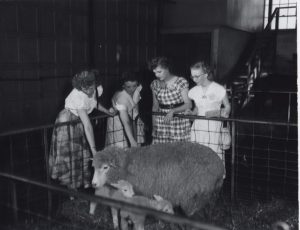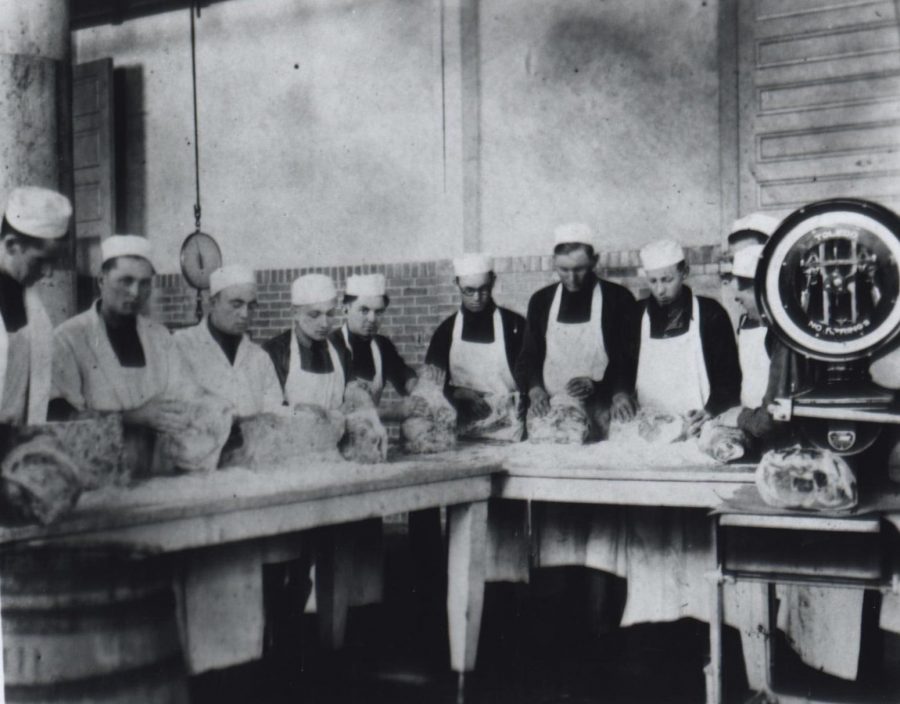Artifacts fill meat lockers originally used to store carcasses prepared for sale.
Cubicles line the floor of what used to be the meat lab.
Exhibits stand on floors once covered with sawdust to show animals.
The purpose of the stock judging pavilion has changed within the past 50 years, but pieces of the building, now the Agricultural Heritage Museum, remain the same.
Everything within the museum reveals the history of agriculture in South Dakota — from exhibits to the trolleys in the basement. But the building itself is an artifact, riddled with changes of time and purpose, but reminiscent of its agricultural beginnings.
The stock judging pavilion was built in 1918 and expanded in 1925. The building, placed on the National Register of Historic Places in 1978, was used for classes, Little International and 4H, offices, and the meat lab up until 1972.
It remained empty until 1976, when it became the Agricultural Heritage Museum.
Dan Gee, a retired professor from the Animal Science Department, remembers taking and teaching classes, as well as managing the meat lab, in the building.
“I spent a lot of time in there,” Gee said.
He can still recall the “clangs and bangs” of the heater in the building, coupled with memories of students he worked with or advised on the livestock judging team.

Women look at sheep and lamb in a pen at the Livestock Judging Pavilion 1950 to 1960. The museum now houses about 3,500 agricultural tools and equipment.
Gee visits the Agricultural Heritage Museum sometimes and is reminded of his time there. He’s tried to look around the building and see his old office, but he hasn’t been able to since it’s been changed to the office for the director of the museum.
Gwen McCausland, Agricultural Heritage Museum director, sees the building as the largest artifact the museum has to offer.
“We have the job to really, not only take our museum and fill these four walls, but really to help broaden that story beyond and have a stronger outreach across the state. Oftentimes it’s lost in a generation,” McCausland said.
The Agricultural Heritage Museum is the official state museum that collects, preserves and gives a “dynamic interpretation” of the history of agriculture in South Dakota. The museum houses about 3,500 agricultural tools and equipment, 1,500 items, 8,300 documents such as maps, prints and advertising, and more than 70,000 photographs of farms, ranches and small towns, according to the museum’s website.
The artifacts are used to educate and give a connection to the past, McCausland said.
“Historical integrity is about the full story that piece comes with, McCausland said. “Not just the shiny, new one-dimensional story.”
McCausland sees people like Gee come to the museum who took classes in the building. Thousands of students took classes there, and the building is a reminder of the past for them, Gee said.
“I’m happy with how it’s used,” Gee said, “rather than to have been at the ceremony for when it would be torn down.”



















